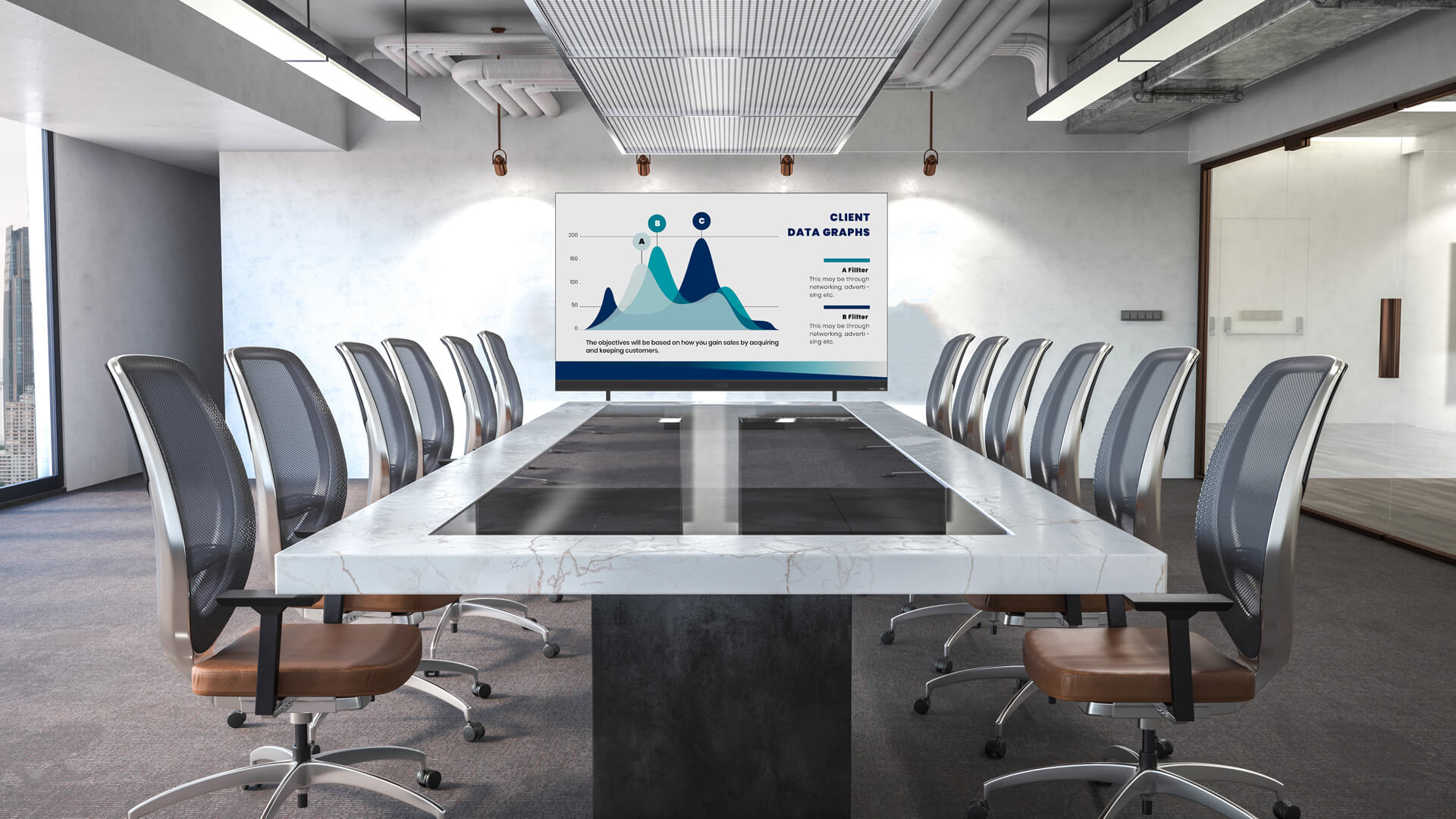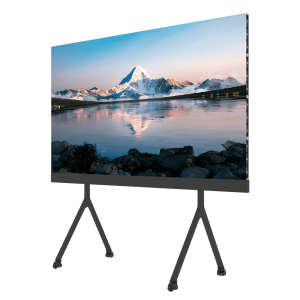In the world of digital signage and large-format displays technology is advancing so quickly it can sometimes feel as though it’s hard to keep up. For years, LCD (or traditional) video walls have been the go-to solution for creating impactful visual experiences. However, with the rise of LED Displays and DVLED technology there is increasing interest in using them as a direct replacement for traditional setups. But how do LED displays measure up against their LCD counterparts? In this post we will compare the two technologies across several key factors to help you understand whether LED displays are the right choice for your next video wall installation.
Seamlessness and Visual Impact
One of the primary advantages of LED displays is their ability to create truly seamless visuals. LCD Video Walls are made up of individual screens that are joined together to form a larger display. Despite advancements in bezel technology (which has reduced the thickness of the borders around each screen) there is still a visible gap between the panels. This bezel creates a disruption in the image which can be distracting. Particularly in applications like command centers, advertising or entertainment.
LED displays on the other hand are composed of tiles that fit together with no visible seams. This allows for an uninterrupted image, creating a more immersive and professional visual experience. For applications where a seamless display is critical such as luxury retail, digital art installations or high-end presentations LED Video Walls offer a significant advantage over LCDs.
Brightness and Contrast
When it comes to brightness LED displays outperform their LCD counterparts by a large margin. LEDs emit light directly, making them capable of achieving higher brightness levels without the need for backlighting. This is particularly important for environments with high ambient lighting, such as outdoor venues, lobbies or airports. LED displays are capable of maintaining their visibility even in bright sunlight.
Additionally, LED displays offer superior contrast ratios with deeper blacks and more vibrant colours. This is because LEDs can turn individual pixels on and off, resulting in a greater dynamic range. LCDs on the other hand, use backlit technology which can sometimes cause blacks to appear washed out. For applications where colour accuracy and contrast are paramount such as broadcast studios or content creation spaces, LED displays provide a clear advantage.
Viewing Angles
Viewing angles are another area where LED displays have an edge over LCD video walls. While LCDs tend to lose colour fidelity and brightness when viewed from extreme angles, LED displays maintain their visual quality regardless of the viewer’s position. This makes them ideal for environments where viewers will be moving around or viewing the display from various positions such as sports arenas, museums and large conference rooms.
Durability and Maintenance
LED displays are known for their durability, especially in comparison to LCD video walls. LCD screens are more vulnerable to impact damage, pressure points and scratches while LED displays are generally more rugged. This makes LEDs a better choice for installations in high-traffic areas or environments where physical impact could be a concern.
Maintenance is also a key consideration when evaluating these two technologies. LCD video walls often require regular servicing due to issues like colour calibration, backlight degradation and potential panel replacements. LED displays on the other hand typically have a longer lifespan with individual LEDs rated to last tens of thousands of hours. Additionally, modern LED displays are designed for easy servicing, with individual tiles being replaceable without the need to dismantle the entire wall. That is why we always suggest keeping a gold stock of spare panels so your display can be back up and running again with minimal downtime.
Energy Efficiency
Energy efficiency is a growing concern in many industries and this is another area where LED displays excel. While both LCD and LED technologies have made strides in reducing energy consumption LED displays are generally more energy-efficient because they don’t require a backlight. LEDs emit light directly, consuming less power to achieve higher brightness levels than their LCD counterparts.
This lower power consumption not only translates into reduced operating costs but also contributes to a smaller environmental footprint—an increasingly important factor for businesses and organisations looking to meet sustainability goals.
Cost Considerations
While LED displays offer numerous advantages over LCD video walls the upfront cost of Direct View LED technology is often much higher. This has historically been one of the major barriers to widespread adoption, especially for smaller businesses or organisations with limited budgets. However, the price gap between the two technologies has been narrowing over recent years as LED manufacturing has become more cost-efficient.
It’s also important to consider the total cost of ownership (TCO). While LCD video walls may have a lower initial cost, the higher maintenance requirements, shorter lifespan and energy consumption can lead to higher long-term costs. For larger installations or long-term projects the energy efficiency and durability of LED displays can make them a more cost-effective solution over time.
Customisation and Flexibility
When it comes to customisation and flexibility, LED displays offer more versatility than LCD video walls. LEDs can be built to any size or shape and their modular design allows for creative installations that are not restricted to standard screen dimensions. Curved displays, 3D installations, and even cylindrical video walls are all possible with LED technology.
In contrast, LCD video walls are typically limited by the size and aspect ratio of the individual panels, making them less flexible for non-standard or highly creative projects.
Conclusion: LED or LCD?
When deciding between LED displays and LCD video walls it ultimately comes down to the specific needs of your project. If you require a seamless, high-brightness, and energy-efficient solution with superior durability and a long lifespan, LED displays are the clear winner. They offer more flexibility in terms of design and provide a more impactful visual experience.
However, for projects with tighter budgets or where the absolute highest visual quality is not critical, LCD video walls may still offer a cost-effective and reliable option. As LED technology continues to evolve and become more affordable, it’s likely that we’ll see even more widespread adoption of LED displays as the preferred choice for large-scale video installations.
If you have any upcoming requirements for DVLED Video Walls or more traditional AV Integrations don’t hesitate to get in touch with our team of Audio Visual Experts.






